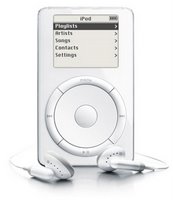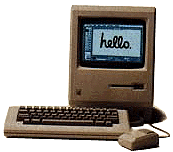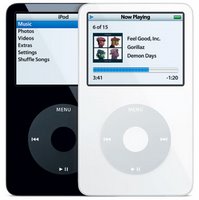Starting this week, I am going to release a weekly report on the Top Ten Innovations introduced by the Top 20 Innovators of
The Innovation Index.
The Top Ten Innovations Report will be released weekly, and will include the following:
1. Top Ten Innovations introduced by the Top 20 Innovators during the previous week.
2. Insights gained from the game changing Top Ten Innovations.
3. My opinion of the business impact and lessons learned from the Top Ten Innovations
What are considered the Top Ten Innovations and included in the weekly report?
New revolutionary products, key acquisitions of innovative products and companies, strategic collaborations and partnerships that create or expand new markets and products, defining or brand new business models changing the business and revenue landscape, and business processes driving creativity and innovation.
Introducing the Top Ten Innovations for the week ending 02-14-07Innovator: 3M (NYSE: MMM)
Innovation: Acquisition of innovative complementary technology
Summary:
3M announced it has acquired Acolyte Biomedica Ltd., a Salisbury, U.K.-based provider of an automated microbial detection platform that aids in the rapid detection, diagnosis, and treatment of infectious diseases.
Acolyte Biomedica helps hospitals control high-risk infections through improved screening and targeted treatment of methicillin-resistant Staphylococcus aureus (MRSA), a type of bacteria that is resistant to certain antibiotics and occurs most frequently in hospital patients who have weakened immune systems.
Insight:
Expanding 3M's core infection prevention business into adjacent markets.
Opinion:
3M is positioning to become the market leader in medical diagnostics area and infection prevention business. This acquisition of innovative technology will create incremental revenue stream and expand the platform to include diagnostic solutions that are more advanced such as molecular diagnostics that will help hospitals to improve the quality of patient care (besides simple, culture-based approaches).
Innovator: Apple Inc. (NASDAQ: AAPL)
Innovation: Strategic partnership and business model creating market expansion
Summary:Apple Inc.'s iTunes store started selling films from independent movie studio Lions Gate Entertainment Corp. (LGF), including the horror film "Saw," the thriller "Basic Instinct" and "Dirty Dancing - Havana Nights” from $9.99.
Apple will add some 150 film titles to the online store, bringing the iTunes film inventory to more than 400 titles.
Insight:
Creating a viable online business model with movie studios that expands iTunes market.
Opinion:
Apple has once again proved that it can create key business deals with movie studios and offer online movies around the $9.99 price point for consumers. Apple will easily see a growth of 30% for the iTunes movie business with this strategic partnership. If the iTunes movie business takes off in the same realm as the iTunes music, watch out!
Innovator: Alliance of all major music publishers and 23 mobile operators
Innovation: MusicStation, a new cellular music service reaching out to 690 million phone subscribers worldwide.
Summary:
The Alliance would launch a cellular music service called MusicStation, introduced by British mobile music firm Omnifone, in the second quarter of 2007, offering unlimited track downloads at 2.99 euros per week -- 1.99 pounds in Britain -- including data traffic charges. MusicStation works on both second and third generation mobile networks. Consumers will be able to download one track in the background while listening to another. The service also tracks personal music tastes and interests, provides news and marketing offerings and has a community service to find users with similar musical tastes. Operators that will offer the service are based in Australia, Belgium, Czech Republic, France, Germany, Greece, Hong Kong, Hungary, Ireland, Italy, Netherlands, New Zealand, Philippines, Poland, Portugal, Romania, Singapore, South Africa, Spain, Sweden, Turkey and Britain.
Insight:
Game changing, global, collaborative innovation that brings parity and feasibility to mobile music.
Opinion:
If MusicStation takes off, it will be a win-win for music publishers and mobile operators. This innovation can significantly impact Apple’s soon to be launched iPhone and the direct service, and may impact iTunes music download business. Apple’s plan to provide a direct service to consumers through its iPhone (essentially bypassing the mobile operators) will be tested.
Innovator: Google Inc. (NASDAQ: GOOG)
Innovation: Enhanced AdWords, redefined business model
Summary:
Google will offer new flexibility to its advertisers by letting them select which third-party sites would display their ads on AdWords. Google said in March it would begin a "beta" test program giving that choice to advertisers. Google will charge for the ads on a cost-per-click, CPC, basis instead of the cost-per-thousand-impressions, or CPM, basis it presently uses.
Insight:
Targeting of marketing programs at Google content partners with one-stop business model
Opinion:
Google is finally providing a one-stop business model, CPC, for the AdWords program regardless of where and how many times the ads are marketed (on Google or at Google content partners). For advertisers, this means expanded reach of their marketing programs at the content sites relevant to their customer need. For Google content partners, this translates to a clear business model and relationship with Google, and upside through targeted marketing programs. For Google, this potentially leads to increased AdWords business as more advertisers resort to increased, albeit, targeted marketing programs at various Google content partner sites. A potential win-win-win.
Innovator: Challenger: HP (NYSE: HPQ) and Incumbent: Research In Motion (NASDAQ: RIMM)
Innovation: HP iPAQ 500, BlackBerry(R) 8800 smartphones
Summary:
HP introduced the latest HP iPAQ Smartphone that delivers a flexible wireless email experience for business customers through convenient voice control and hands-free operation.
The HP iPAQ 500 series Voice Messenger features voice over Internet protocol (VoIP) capabilities, "push" email and the latest Windows(R) Mobile 6 operating system. With up to six hours of continuous talk time on a fully charged battery, voice commands, hands-free operation, the HP iPAQ Voice Messenger also leads the competition in battery life.
Using a powerful "voice reply" feature, people can reply to email by dictating and sending a voice response, without the need for any typing. Users also can listen to email and text messages, navigate through phone and calendar tasks and speak to start applications.
Research In Motion introduced the BlackBerry 8800 - a feature-rich and finely tuned Smartphone that is both functionally and visually inspiring.
The BlackBerry 8800 is the thinnest BlackBerry handset yet and is designed to satisfy the most demanding mobile professionals. Equipped with a full, highly tactile QWERTY(i) keyboard and RIM's user-friendly trackball navigation system, it also includes built- in GPS (Global Positioning System), multimedia features and a microSD expandable memory slot.
The quad-band GSM/GPRS and EDGE-enabled BlackBerry 8800 offers best-in-class performance with smoothly integrated support for voice and data applications, including phone, email, text messaging, web browser, organizer, multimedia and more. Powering its robust performance is an ultra-thin, high-capacity battery that further extends the uncompromising battery life for which BlackBerry handsets are renowned.
Insight:
New smartphones for first time business professionals, and ones looking to upgrade, potentially expanding the smartphones worldwide market
Opinion:
Can HP create a dent in the Smartphone market that is led by established players including Research In Motion and PALM? HP does have a loyal albeit small following for the iPAQ, and this is the best iPAQ yet with innovative voice features. If the iPAQ 500 does not succeed, HP may have to rethink the Smartphone business altogether. On the other hand, the BlackBerry 8800 is a surefire success. It offers best in class features, performance and quality – the workhorse now even looks sleek. Research In Motion has plans to expand worldwide beyond the 200 operators through BlackBerry Connect, potentially adding a 100 more operators. The BlackBerry 8800 will be a catalyst for expansion.
Innovator: General Electric Co. (GE) (NYSE: GE)
Innovation: Joint Ventures and Strategic Investments in growing energy market, acquisition business model
Summary:
A unit of U.S.-based conglomerate General Electric Co. (GE) Wednesday agreed to buy up to a 22% stake in France-listed wind-farm developer Theolia SA (18481.FR) to boost its exposure to renewable energy in Europe. General Electric's unit, GE Energy Financial Services, will inject EUR20 million into Theolia to help fund the company's aggressive growth plans in Europe, Brazil and India.
123Systems, a promising young company with advanced technology for rechargeable batteries, recently received a timely recharge from a group of investors. GE, in addition to acting as lead investor in A123's latest fund-raising effort, a $40 million series D equity round which closed January 24, is also looking to see where A123Systems' proprietary energy-storage technology can accelerate work already underway at GE on clean energy products. GE's Global Research Center announced in late 2006 the first formal program, a $13MM joint initiative with A123Systems to develop a zero-emissions hybrid fuel cell bus.
Insight:
Continuous innovation at GE through joint ventures and strategic investments in emerging market companies.
Opinion:
GE has sound innovation business processes and is a perennial innovator of products that we admire and use on a daily basis; however, GE does not hold back when it comes to placing bets with key companies in the core growth markets such as renewable and alternative energy. GE has perfected the business model of identifying the companies with innovative technology in the core growth markets, injecting capital including money, products and resources into these companies, enabling these companies to create and further the game changing market innovations, and eventually acquiring these companies. GE is perhaps the master incubator of our times.
Innovator: Intel Corporation (NYSE: INTC)
Innovation: Teraflop processor delivering supercomputer performance
Summary:
Intel Corporation researchers have developed the world's first programmable processor that delivers supercomputer-like performance from a single, 80-core chip not much larger than the size of a finger nail while using less electricity than most of today's home appliances. This is the result of the company's innovative "Tera-scale computing" research aimed at delivering Teraflops -- or trillions of calculations per second --performance for future PCs and servers.
Tera-scale performance, and the ability to move terabytes of data, will play a pivotal role in future computers with ubiquitous access to the Internet by powering new applications for education and collaboration, as well as enabling the rise of high-definition entertainment on PCs, servers and handheld devices. For example, artificial intelligence, instant video communications, photo-realistic games, multimedia data mining and real-time speech recognition - once deemed as science fiction in "Star Trek" shows - could become everyday realities.
Insight:
“Tera-scale computing” for the masses
Opinion:
WOW!! Intel has no equal in the world of high performance microprocessors. I can’t wait for Intel to release the world’s first Teraflop microprocessor that delivers supercomputer-like performance on my PC, and host a live multimedia video conference with my friends and family all over the world, play virtual reality games, and convert my family room into a worldwide communication and entertainment hub. Let the countdown begin…
Innovator: Wal-Mart Stores, Inc. (NYSE: WMT)
Innovation: Checkup – The New Model for basic health care delivery in America
Summary:
CheckUps, the retail-based, non- emergency walk-in medical facility, will open 14 new clinics in leased space inside Wal-Mart Stores in Alabama, Louisiana and Mississippi as part of a Grand Opening series on February 14.
Check-Ups clinics diagnose and treat common ailments such as strep throat, ear and sinus infections, and provide routine pediatric care, blood screenings, and immunizations, along with services such as healthy living counseling. CheckUps nurse practitioners can write and email prescriptions to the patient's preferred pharmacy. Visits typically take under 15 minutes and no appointments are necessary. The clinics will provide a full cholesterol screening in just five minutes using the state-of-the-art Cholestech LDX System made available by Henry Schein, Inc. and Cholestech Corporation.
Insight:
Breaking the mold Innovation beyond retailing into preventative and basic health care.
Opinion:
Checkup and Wal-Mart has the potential to create disruptions in healthcare industry. On the one hand, Checkup provides a low cost option for every day health problems such as cold, cough, sore throat, ear infection, aches and pains, and more; Checkup also provides health screenings and counseling to live healthy and happy lives; finally, Checkup combines with Wal-Mart pharmacies so that a consumer can have a one-stop place for health checkup and medicine – all within thirty minutes or less. The biggest problem with healthcare has been getting a timely appointment with your primary doctor, going to the doctor, waiting for the doctor’s appointment, seeing the doctor, getting a diagnosis, getting a prescription, going to the pharmacy, waiting for the prescription, and finally getting a prescription – total time: 2 to 3 hours on an average. Checkup and Wal-Mart can potentially do all of the above in 1 hour or less for basic healthcare needs. This can be disruptive.
Innovator: Microsoft (NASDAQ: MSFT)
Innovation: Windows Mobile 6, Windows Live and PlayReady products and business model
Summary:
Microsoft launched three new Windows Live products alongside its updated Windows Mobile 6 operating platform, including a localized search engine product, a map application and improved instant messaging services.
Microsoft's Live search application includes localized services that will allow U.S. and U.K. residents to use an Internet browser on their mobile phones to search for restaurants, hotels and retail outlets in their area, and include satellite mapping applications. U.S. users will also be able to receive live traffic updates overlaid on a map on their mobile device. Advertising search facility would provide further advertising revenues for both Microsoft and mobile phone operators.
Microsoft also launched its PlayReady technology, a new multimedia content access technology optimized to meet the needs of mobile operators and handset manufacturers for digital entertainment and commerce. Microsoft PlayReady technology enables a broad spectrum of business models such as subscription, rental, pay-per-view, preview and super-distribution, which can be applied to many digital content types and a wide range of audio and video formats.
The DRM technology - which Telefonica SA (TEF), Verizon Wireless and AT&T Inc.'s (T) mobile unit, formerly known as Cingular Wireless, are all planning to use - protects music, video, games and ringtones from piracy.
Windows Mobile 6, takes its cues from Windows Vista, and introduces the ability to view e-mails in their original HTML Internet format with live Web links from advanced mobile phones, generally referred to as smartphones.
Insight:
Potentially game changing innovations in operating platform, search, DRM and business models.
Opinion:
Microsoft has served notice with the latest introductions of its key mobile applications and business models. Microsoft is challenging Symbian and Nokia, Google, Yahoo!, Apple, the Alliance (above), and everyone else is who is planning to provide operating platform, search, mapping and content technologies for the mobile business. Importantly, Microsoft is positioning well as a neutral operating platform player with applications and business models that taken together make business sense to mobile operators and content owners alike. Can Microsoft become the heavyweight in the mobile software industry? Only time will tell. However, Microsoft has so far dealt a good hand.
Innovator: Yahoo! (NASDAQ: YHOO)
Innovation: Integrated Marketing Innovation
Summary:
Yahoo! Inc. has signed up top corporate advertisers to use its advertising system to run brand ads on mobile phones in 18 countries, marking a major diversification beyond computers. The Internet media company has begun offering its brand advertising to reach mobile phone users across markets in Western Europe, South Asia and the Americas, capitalizing on its prowess in supplying Web advertising to computer users. Yahoo said it has signed up major advertisers including Hilton's Embassy Suites, Infiniti, Intel Corp., Nissan, Pepsi & Co, Procter & Gamble Asia-Pacific and Singapore Airlines as initial advertisers on Yahoo's mobile advertising system.
The company already offers online marketing services to a large majority of the top 100 U.S. advertisers. By expanding onto mobile phones, Yahoo aims to help corporate advertisers run coordinated campaigns that reach both computer and phone audiences, an official said.
Insight:
Leading integrated marketing innovations for online and mobile markets
Opinion:
Yahoo! is leading the battle of marketing services for advertisers who want to run integrated campaigns across online and mobile markets, through computers and wireless phones. Whereas Microsoft is positioning itself as an operating platform with applications for search and mapping and DRM, Yahoo! is leading the game by providing an integrated marketing platform for advertisers who want to run campaigns at either Yahoo!’s many online properties or mobile. Yahoo! Go for Mobile 2.0, Yahoo! Mail that now incorporates instant messaging, and Yahoo! Messenger for mobile further substantiate Yahoo!’s market leading position for mobile phone makers such as LG who is planning to incorporate these applications in the new mobile phones. If Yahoo! is able to pre-load Yahoo! apps on a majority of leading mobile phone makers, Yahoo! will be able to solidify its position in the mobile market. Yahoo!’s integrated marketing innovation will create a small revenue upside in 2007, with greater growth plausible in 2008 and beyond.
References:
The Innovation Index The Innovation Index Annual Report – Chapter OneThe Innovation Index Annual Report – Chapter TwoThe Innovation Index Annual Report – Chapter ThreeReuters
Marketwatch
Press releases
Dow Jones Newswires
BusinessWire
About
The Innovation IndexThe Innovation Index introduced in December, 2006 is a weighted stock price index of the top 20 Innovators in North America.
The Innovation Index has returned 119% over the last five years. This assumes an investment in each stock of The Innovation Index (buying each stock). An average of $100 invested in The Innovation Index on December 31, 2001 returned $219 as of December 29, 2006. By comparison, $100 invested in each of S & P 500, NASDAQ and Dow Jones Index returned $124. The Innovation Index beats the S & P 500, NASDAQ and Dow Jones Index by 77% over the last five years.
The Normalized Innovation Index is even more impressive, and has returned 174% over the last five years. This assumes equal investment in each stock of The Innovation Index.
The alphabetical list of the top 20 Innovators of The Innovation Index along with their stock ticker symbols are presented below:
3M Company - (NYSE: MMM)
Amazon.com, Inc. - (NASDAQ: AMZN)
America Movile - (NYSE: AMX)
Apple Inc. - (NASDAQ: AAPL)
Cisco Systems, Inc. - (NASDAQ: CSCO)
Dell Inc. - (NASDAQ: DELL)
eBay Inc. - (NASDAQ: EBAY)
General Electric Co. - (NYSE: GE)
Google Inc. - (NASDAQ: GOOG)
Hewlett-Packard Co. - (NYSE: HPQ)
Intel Corporation - (NYSE: INTC)
International Business Machines Corp. - (NYSE: IBM)
Microsoft Corporation - (NASDAQ: MSFT)
Research In Motion Limited - (NASDAQ: RIMM)
Southwest Airlines Co. - (NYSE: LUV)
Starbucks Corporation - (NASDAQ: SBUX)
Target Corp. - (NYSE: TGT)
The Proctor & Gamble Company - (NYSE: PG)
Wal-Mart Stores, Inc. - (NYSE: WMT)
Yahoo! Inc. - (NASDAQ: YHOO)
The Innovation Index will analyze the positions and standings of the top 20 Innovators at the end of each year. For 2007, there will be no further changes in The Innovation Index.
Disclaimer: I invest in the stocks comprising The Innovation Index, beginning in 2007.









